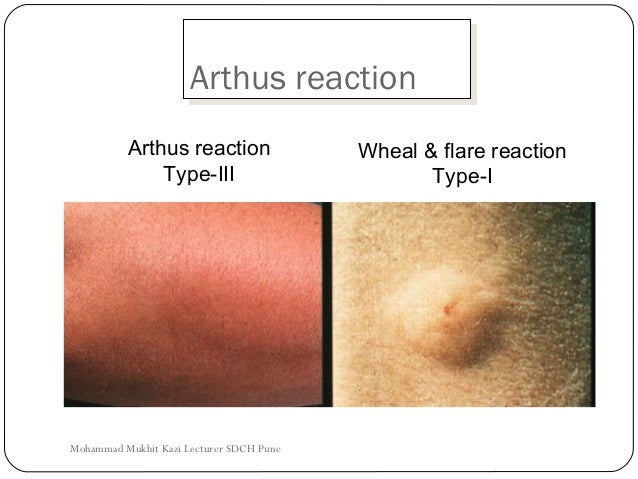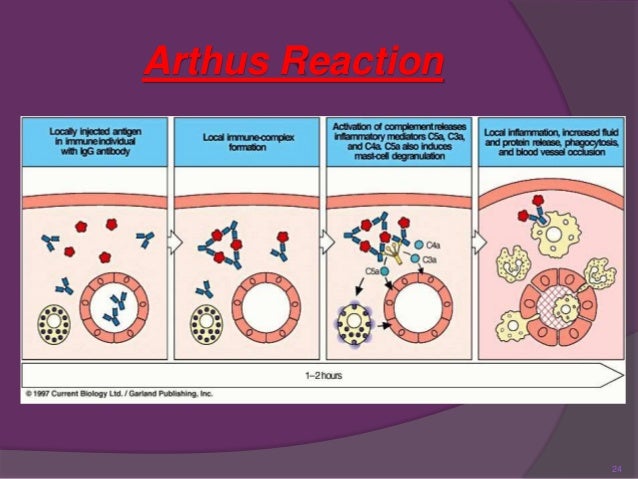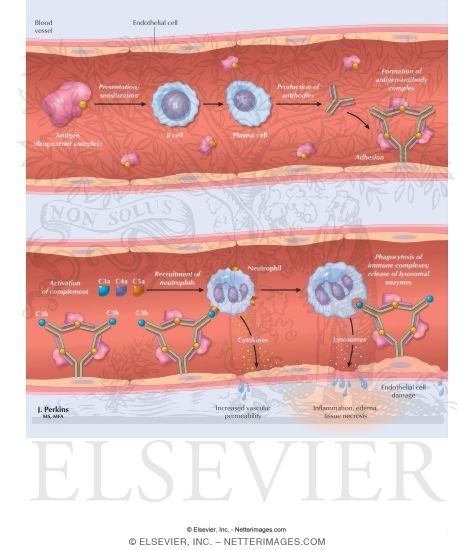Arthus reaction
The Arthus reaction, which is also called Arthus phenomenon is a local type III hypersensitivity reaction or response from the Arthus- type ( classical classification according to Coombs and Gell, see allergy).
Is named the phenomenon after the physiologist Maurice Arthus, who discovered in 1903 that occur in previously sensitized animals, after re- injection of the relevant antigen, severe inflammatory reactions near the injection site.
The Arthus reaction is a Type III reaction, an immune response to soluble antigens is based. In this case, IgG antibodies are formed. If the specific antigen injected subcutaneously once again after the immune response or sensitization, the formed IgG antibodies can diffuse into the tissue and bind to the antigen administered locally. Because little antigen is injected subcutaneously, it even comes to the local formation of immune complexes. These immune complexes can bind to the FcγRIII receptors of mast cells or leukocytes. It fires a local inflammatory response, resulting in an increased vascular permeability ( wheals ) shows. The maximum value of the reaction is reached after 3 to 8 hours, after 48 hours it has disappeared.










